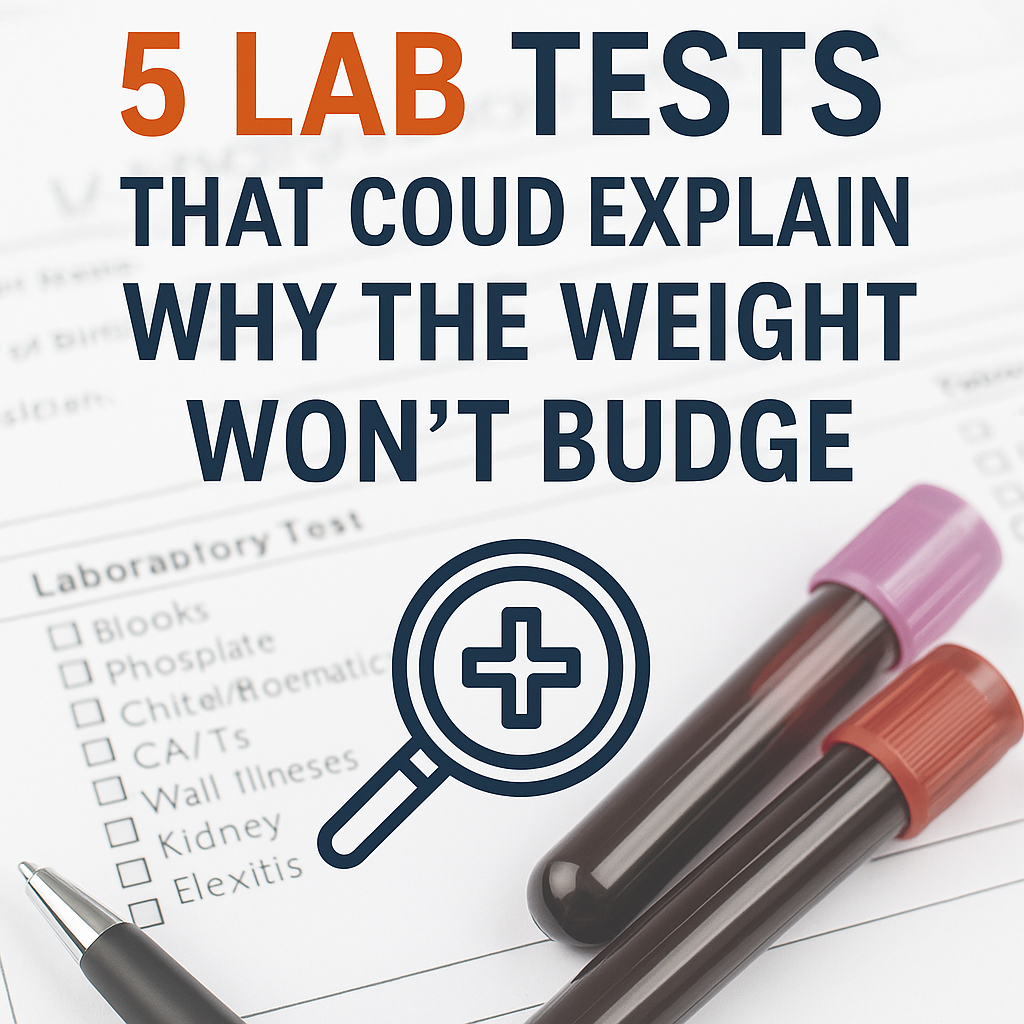
Blogs & News


5 Blood Tests That Could Reveal What’s Holding You Back
You’re eating better. Moving more. Maybe even cutting back on sugar, alcohol, or snacking.
But the scale won’t budge — or worse, it’s creeping in the wrong direction.
You’re doing everything “right,” and your doctor says your labs look “fine.” But something still feels off.
Sound familiar?
Most people only think about blood work when something’s clearly wrong — fatigue, weight gain, or symptoms that just won’t go away.
But here’s the truth:
Lab work isn’t just about diagnosing illness — it’s a tool for understanding what’s silently holding you back.
Getting labs done regularly can help uncover:
-
Hidden inflammation
-
Stress overload
-
Thyroid slowdowns
-
Early signs of insulin resistance
-
Metabolic bottlenecks
In other words — it can give you a clearer path forward, especially when you’re doing all the right things but not seeing results.
Breaking Through The Weight Loss Stall
Not all lab panels go deep enough to reveal why your weight might be stuck. But these five markers offer valuable insight into some of the most common hidden barriers:
🧪 1. Fasting Insulin
Why it matters:
Even if your blood sugar looks normal, high insulin can keep your body in fat-storage mode — especially around the midsection.
-
Optimal range: 2–5 μIU/mL
-
Elevated insulin = more cravings, less fat-burning, slower progress
- Included in standard labs? ❌ No — must be specifically requested
🧪 2. Cortisol (Morning blood or saliva)
Why it matters:
Cortisol is your main stress hormone. When it’s too high — or too low — it can disrupt sleep, spike cravings, and block weight loss.
-
Ideal test time: Morning (8–9am)
-
Chronic stress raises blood sugar, increases inflammation, and encourages fat storage
- Included in standard labs? ❌ No — usually only ordered if there are clear signs of adrenal or stress-related issues
🧪 3. Free T3 and Free T4 (Thyroid Panel)
Why it matters:
Most providers only check TSH, but that doesn’t always reflect how well your thyroid is functioning.
-
Free T3 = your metabolism’s gas pedal
-
Low levels can slow fat-burning, energy, and mood
-
Even “normal” TSH with low Free T3 can leave you feeling flat and stuck
- Included in standard labs? ❌ TSH is usually included, but Free T3 and Free T4 must be requested
🧪 4. hs-CRP (High-Sensitivity C-Reactive Protein)
Why it matters:
This test measures low-grade inflammation — a silent blocker that can affect metabolism, insulin sensitivity, and energy levels.
-
Optimal range: under 1.0 mg/L
-
Even mild elevation means the body may be under metabolic stress
- Included in standard labs? ❌ No — must be specifically requested; sometimes confused with regular CRP, which is less sensitive
🧪 5. ALT (Alanine Aminotransferase)
Why it matters:
ALT reflects liver function — and your liver plays a key role in fat metabolism, detoxification, and hormone processing.
-
Optimal range: 10–30 U/L (men), 7–25 U/L (women)
-
Elevated ALT can signal non-alcoholic fatty liver — common in adults over 40, even without alcohol intake
- Included in standard labs? ✅ Yes — often included in the Comprehensive Metabolic Panel (CMP)
Your Next Step: Ask, Don’t Guess
You don’t have to be an expert — and you don’t need to challenge your doctor to take a more proactive approach.
A single conversation can open the door to a more complete picture — one that supports your goals instead of leaving you stuck in guesswork.
Sometimes, weight loss resistance is a sign your body is protecting you — from stress, from imbalance, or from deeper dysfunction.
These five tests aren’t about chasing perfection or diagnosing disease.
They’re about gaining better insight — so you can create a plan that actually fits your body.
Because after 40, the “calories in, calories out” formula doesn’t tell the whole story.
But your lab work just might.
Search
Categories
Best Sellers



